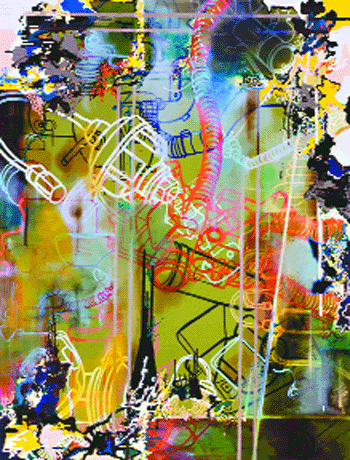Lydia Dona’s intellectual drive forges new narratives from painting history
Lydia Dona, an artist who is well known nationally and internationally, is showing a new body of paintings created over the last two years at the Michael Steinberg Gallery in Chelsea.
Dona’s new work, curated by Jill Brienza explores the inventories of paintings’ signifiers, and draws on the special effects found there. She forces us to fend for ourselves, in a free fall through a collapse of art history. Images of machines, geometric divides, floating veils and soft pools of light fade in and out onto the blank screen of the canvas. While recalling the drama and mystery of film noir, she manages to capture “time” pushing backwards and zooming forward while keeping her focus and embracing the aperture of painting.
Dona continues to be a leader and, like many painters today, has taken a strategy of turning formal painting ideas on their head to force out fresh narratives and construct new meanings. Every interior move functions on multiple levels, daring us to keep up with her rigorous intellectual pace. Through a corporeal fusion with technology, the painting is flayed open and functions like an artificial heart in a transplant operation.
Dona’s palette combines nature––moss greens, rusty browns, midnight blues––and cosmetics––lipstick red, blush pinks, eye shadow blues––with shiny, flat, plastic artificial colors of yellows and oranges. In “The Girl With the Cat on Her Head,” diagrammatic collections of discarded machine parts mingle with tangles of electrical wiring while a drawn flexible venting tube leads us in and out of a virtual landscape resembling the inside of a bomb. Thew painting feels like an explosion that erupted while the Maytag man was shopping at the Clinique makeup counter.
Using a vocabulary of contradictory painting techniques and histories––stains from color field paintings, dabs from pointillism, and Ben Day dots from pop cartoon art, dripping paint from Pollock and the layering of images from Picabi––Dona forces mutations and creates new visual models. All of this atomic fusion creates an environment of chemical toxicity, rich with hybrid possibilities and dramatic results. In the end, real painting erupts as we watch the fake become real


































